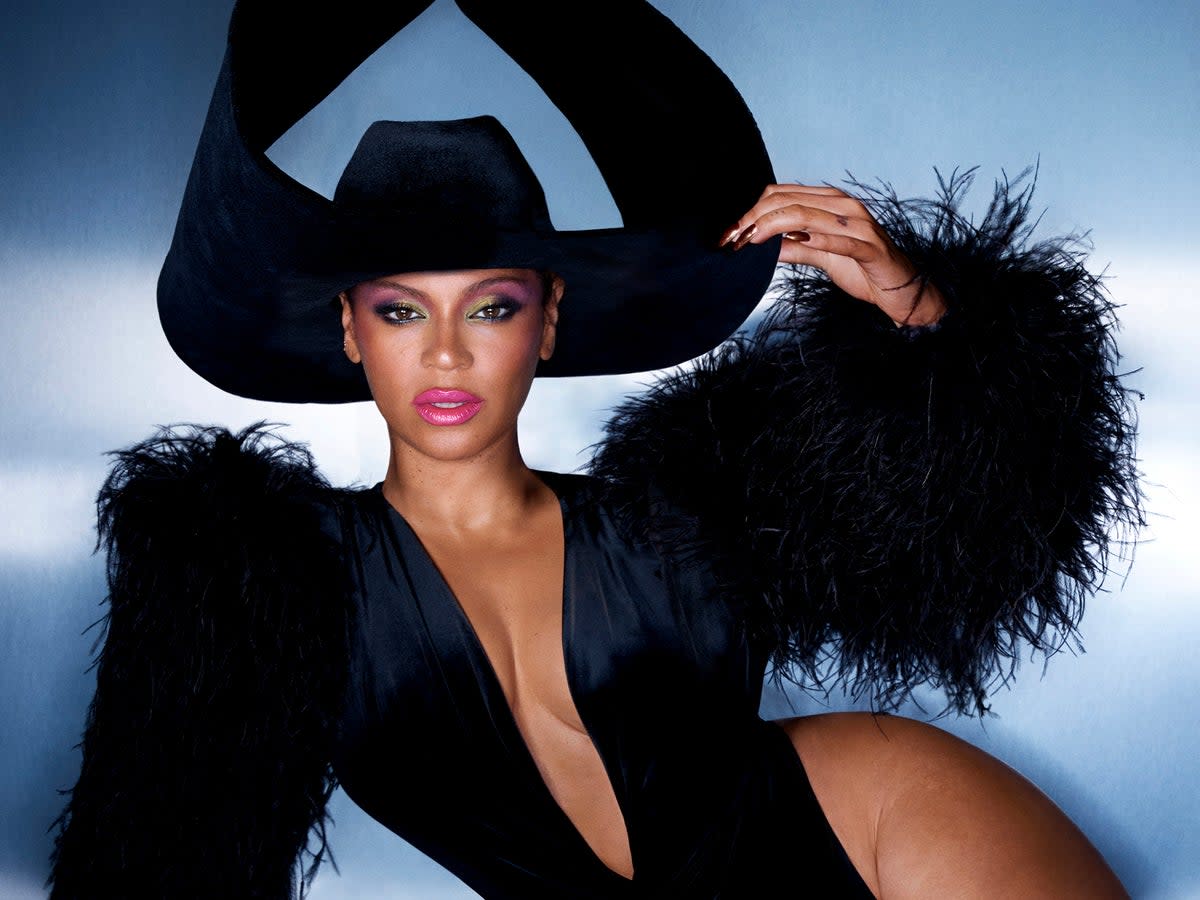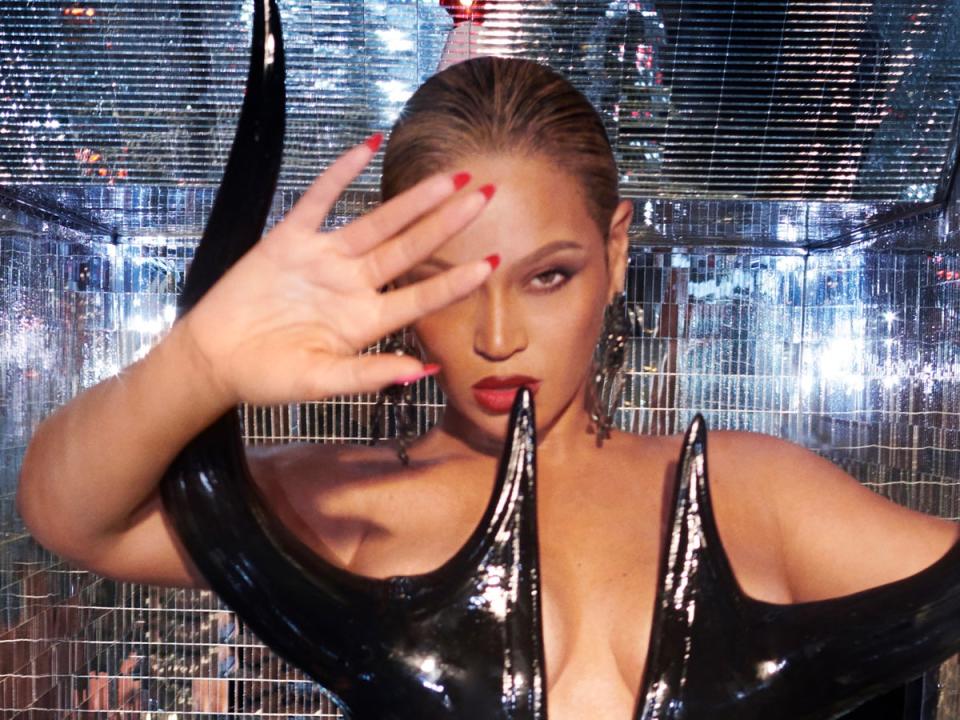She’s That Girl: How Beyoncé harnesses surprise and reinvention to stay at the top

For Beyoncé fans, the agonising wait for a new album is over. After a month-long rollout, including the release of lead single “Break My Soul” in June, the US artist has officially dropped her seventh studio album, Renaissance. When she revealed the title of the project last month, she stated her intention that it would serve as a safe space for her creativity, free from judgement. “A place to be free of perfectionism and overthinking,” she said. “A place to scream, release, feel freedom.” Across 15 tracks, she shows us exactly what she meant. A sizzling concoction of ballroom, disco, house and soul, Renaissance is a celebration, with no weepy ballads in sight. From the opening track, “I’m That Girl”, Beyoncé tells us: she’s grown, she’s liberated, and she answers to no one but herself.
The album might signify the dawn of another era for the 40-year-old pop force. But more than this, Renaissance’s launch is an example of how Beyoncé’s creative choices send ripples across the world. Despite a last-minute leak making the album available early for those who just couldn’t wait, the majority of fans held on until the clock struck midnight on Friday 29 July. A Beyoncé experience must be authentic, of course. Within minutes, the album shot to the top of the charts and united social media timelines in a way only a Beyoncé release can. Whether you’re a super fan, or more neutral to the Bey phenomenon, it’s undeniable that she has a unique grip on the public’s attention. And it’s not loosening any time soon.
For those steeped in the Beyhive, there’s little debate over the moment that Beyoncé’s power became an undisputed fact. The journey started in 2003 when a hiatus from Destiny’s Child gave her the space to launch as a solo artist with Dangerously in Love. Later down the line, the release of “Single Ladies” from her I Am… Sasha Fierce double album made the phrase “put a ring on it” an indelible part of engagement announcements. But the moment that truly signalled Beyoncé’s future as pop’s reigning queen came on the morning of 13 December 2013, when the then 32-year-old released her fifth album on iTunes. Simply titled BEYONCÉ, the record came complete with music videos, collaborations and merchandise – and without warning.
At that time, the idea of surprising the world with a fully fledged project, promotion-free, was novel. Album rollouts were carefully planned affairs, with singles uniformly teased out as a taster of the whole project. Artists were expected to tout their product to the world via interviews, magazine covers, live performances and TV spots. BEYONCÉ was a game-changer, and its release generated over 1.2 million tweets in 12 hours. Beyoncé’s fellow stars, including Taylor Swift, Eminem and Drake, have since used the same method to deliver albums in a way that generates as much debate – if not more – than if they’d embarked upon the traditional album campaign. By 2015, Friday had become the globally agreed-upon release day for new music – the success of BEYONCÉ is widely credited for impacting that decision.
Her love of a good surprise continued with “Formation” in 2016. Not only was this song and video first spread across the internet via an unlisted YouTube link, the content itself proved to be something that demanded immediate attention. With lyrics such as “I love my negro nose and Jackson Five nostrils”, a video filled with references to Black Southern culture and footage of police officers raising their hands in a “don’t shoot” motion, “Formation” was the first time Beyoncé had actively incorporated Black experiences at the forefront of her creative output. A viral SNL sketch about “The Day Beyoncé Turned Black” poked fun at the outrage from conservative onlookers – of course, her race has never changed, but “Formation” was a departure from the largely non-politicised work she’d delivered in the past.
Then Beyoncé squeezed a few more lemons and made Lemonade, the 2016 visual album that tackled themes of infidelity, defiance, anger and forgiveness while drawing attention to the specific generational issues faced by Black women. Perhaps most shocking of all were the personal stories woven into the record, including hints that Beyoncé’s husband – rapper and business mogul Jay-Z – had been unfaithful. For a woman who had – and continues to – keep her private life just so, this was an extraordinary glimpse into her life behind the scenes.

She might have gone six years before releasing another solo album, but Beyoncé has hardly left the cultural discourse since. There was Everything Is Love, her joint, reconciliatory album with Jay-Z. Her spectacular 2018 Coachella headline slot, which incorporated a brass band and traditions from the US’s historically Black universities and colleges, was nominated for an Emmy after its release on Netflix in 2019 under the title Homecoming. Then, The Gift saw Beyoncé collaborating with African artists for an eclectic album to tie in with the live-action film The Lion King. In 2020, Black is King provided the sumptuous visual compilation to go with it and, like the projects that came before, had the internet dissecting songs and scenes for weeks on end.
Nearly three decades into Beyoncé’s career, Renaissance shows us yet another facet of this bold, incomparable artist. Despite years of politics and angst being key features in her work, her sexy side is front and centre this time around. Predictions of what “Church Girl” might be about go right out the window when she commands us to “drop it like a thottie”, while she celebrates her growing assets (both ass and cash) on “Thique”. House music is the beating heart of this new record, and the sampling of queer icons such as Big Freedia, Ts Madison and Honey Dijon gives the record an energy that’s distinctly joyful and assertive. It’s just the first part in a planned trilogy, so one thing’s for sure: Beyoncé’s power won’t be waning any time soon.

 Yahoo News
Yahoo News 
